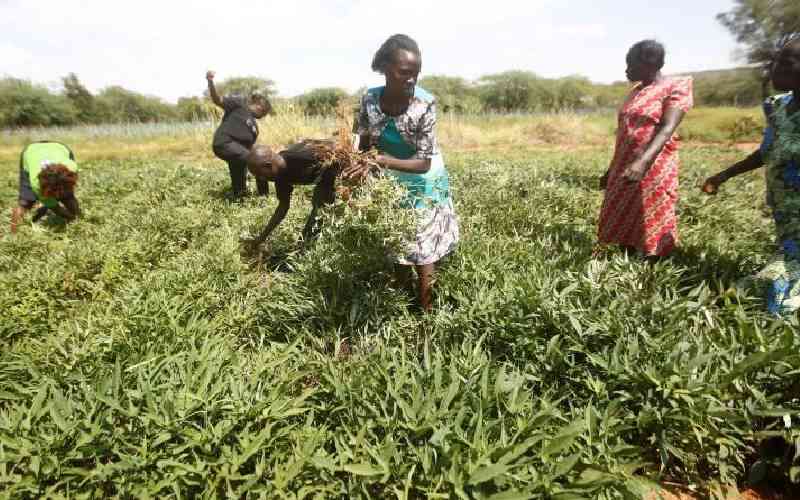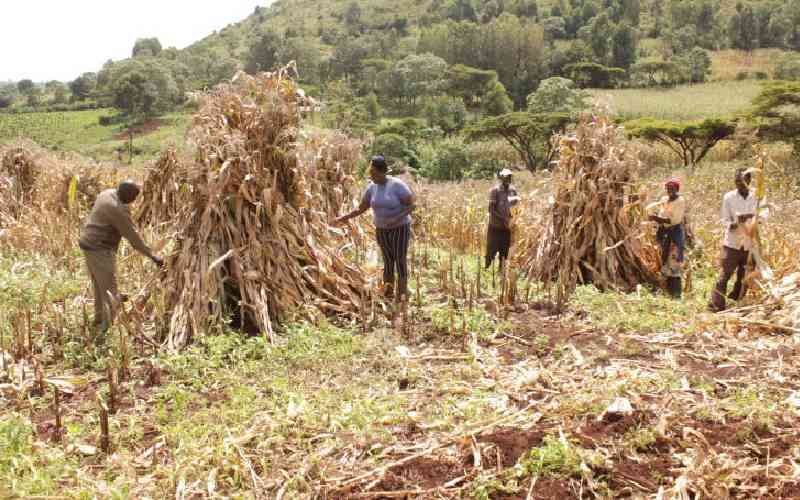Influential observation experts say the current drought is likely to be the worst in recent years, with more than one a million people in the northern, eastern and coastal counties facing starvation.
These areas received very little rainfall in the last short rains' season of October, November and December 2016, which experts attribute to climate change.
It is evident the drought cycle has reduced from six years in the 1980s to two years currently.This is expected to greatly impede food security given the rain-fed nature of our agricultural production.
Although the Government has in recent years pursued measures to improve the national food security status, the situation is far from satisfactory.
A report released in 2016 by the World Food Programme titled 'Kenya Comprehensive Food Security and Vulnerability Survey (CFSVA)' revealed worrisome statistics.
One in every three households in Kenya was unable to get enough and nutritious food. In addition, more than 4 million people consumed food poor in diet, comprising maize, greens and oil.
The report singled out Turkana, Samburu, Tana River, Baringo, West Pokot, Busia and Siaya counties as the most food insecure in the country.
The current drought will, therefore, make an already bad situation worse. In particular, it will disrupt the supply of food by reducing production and depleting stock levels from previous harvests.
The amount of food available for trade will also decline as the surplus from the previous harvest will be consumed rather than sold. As a result, food deficit will be created in the domestic market.
Although the crisis could be overcome through staple food importation, not every household will afford it.
This is because households have to simultaneously respond to other drought-induced vulnerabilities such as buying water, which deplete their income.
While all members in the household are prone to suffer the consequences of food insecurity during drought, children, particularly those under 5 years, bear the greatest brunt.
Drought-related food deficit can lead to stunted growth in children, loss of weight and general wasting.
This not only exposes them to the risk of diseases, but also to lifelong effects on their physique and cognitive ability, making them less productive.
Vulnerable persons such as children, the elderly and lactating mothers should be provided with food aid to cushion them from adverse drought effects.
Stay informed. Subscribe to our newsletter
This can be accomplished through revamped school feeding and cash transfer programmes.
In the long-term, however, it will be necessary for institutions mandated to manage drought to invest in measures to translate information generated from the early warning system into bespoke interventions.
 The Standard Group Plc is a
multi-media organization with investments in media platforms spanning newspaper
print operations, television, radio broadcasting, digital and online services. The
Standard Group is recognized as a leading multi-media house in Kenya with a key
influence in matters of national and international interest.
The Standard Group Plc is a
multi-media organization with investments in media platforms spanning newspaper
print operations, television, radio broadcasting, digital and online services. The
Standard Group is recognized as a leading multi-media house in Kenya with a key
influence in matters of national and international interest.
 The Standard Group Plc is a
multi-media organization with investments in media platforms spanning newspaper
print operations, television, radio broadcasting, digital and online services. The
Standard Group is recognized as a leading multi-media house in Kenya with a key
influence in matters of national and international interest.
The Standard Group Plc is a
multi-media organization with investments in media platforms spanning newspaper
print operations, television, radio broadcasting, digital and online services. The
Standard Group is recognized as a leading multi-media house in Kenya with a key
influence in matters of national and international interest.









